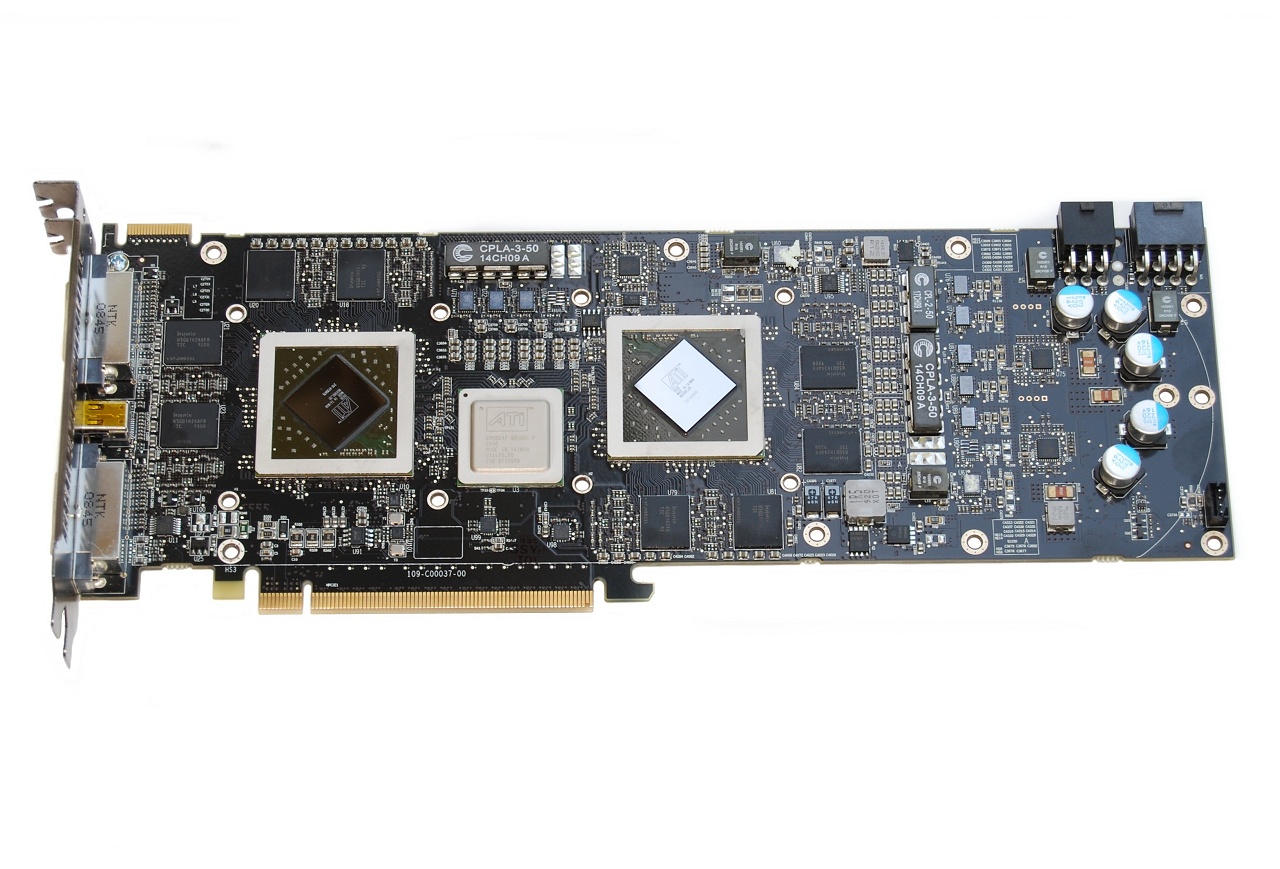ATI revealed its last generation Radeon 5000 graphics family last September, when we got the chance to review the ATI Radeon HD 5870, and what a treat that was.
In a few tests the single-GPU Radeon HD 5870 was able to outgun the mighty GeForce GTX 295, while in most it managed to match or improve upon the Radeon HD 4870 X2. As you are likely aware, both of these products carry dual GPUs, which bring a number of implications, not to mention bigger price tags.
Looking forward we knew Nvidia would have no immediate response to the new Radeons, while on the other hand ATI was not done unleashing its full series of products. Subsequently we looked at two more products that were meant to underperform the flagship HD 5870: the slightly cut down Radeon HD 5850 and the mainstream aimed HD 5770.

From left to right: Radeon HD 5770, HD 5850, HD 5870, and HD 5970.
But as we discussed in our preliminary Radeon 5870 review, on the horizon was also a follow-up to the Radeon HD 4870 X2, code-named "Hemlock XT", which in essence would put together a pair of Radeon HD 5870 GPUs on a single PCB.
Today AMD is officially unveiling the Hemlock as the new ATI Radeon HD 5970, hoping to expand its current dominance in single-GPU performance with the fastest single-slot graphics card on the market – a title that until today was reserved for Nvidia's dual-GPU GeForce GTX 295.
The Radeon HD 5970 looks to be well suited for the job. The GPUs used in this card use exactly the same configuration found on the Radeon HD 5870, while core and memory frequencies match those of the Radeon HD 5850. This provides the HD 5970 with an unmatched memory bandwidth of 256GB/s.
All this horsepower will come at a hefty price, as AMD expects to charge as much as $600 for it. This is a bit hard to swallow, but all things considered it's about where we expected it to stand among the rest of high-end graphics offerings.

Full exposure: A "naked" Radeon HD 5970 graphics card.
The $400 Radeon HD 5870 is still sold out virtually everywhere due to extreme shortages. The Radeon HD 5850 version still costs $300, meaning that a pair of them would cost the same amount as a single Radeon HD 5970, and we do not expect the performance to be nearly as good. On the other side of the equation, Nvidia's top performer, the GeForce GTX 295 is selling for around $500.
As we see it, only extreme users looking for the best possible gaming experience - or the bragging rights attached to the label - will find the Radeon HD 5970 to make complete sense.
Knowing this is the 5970's intended market, AMD has stamped a big "unlocked" label over the card in our press kit. Perhaps more marketing buzz than actual functionality, the Radeon HD 5970 allows you to jack core and memory frequencies as high as you like – or at least as high as they will go without compromising stability. This in itself is far from exciting news as there's been software available to do just that for ages.
The most interesting part should come from the ability to adjust voltages and thus increase the card's overclocking room, something we'll be checking in detail next.